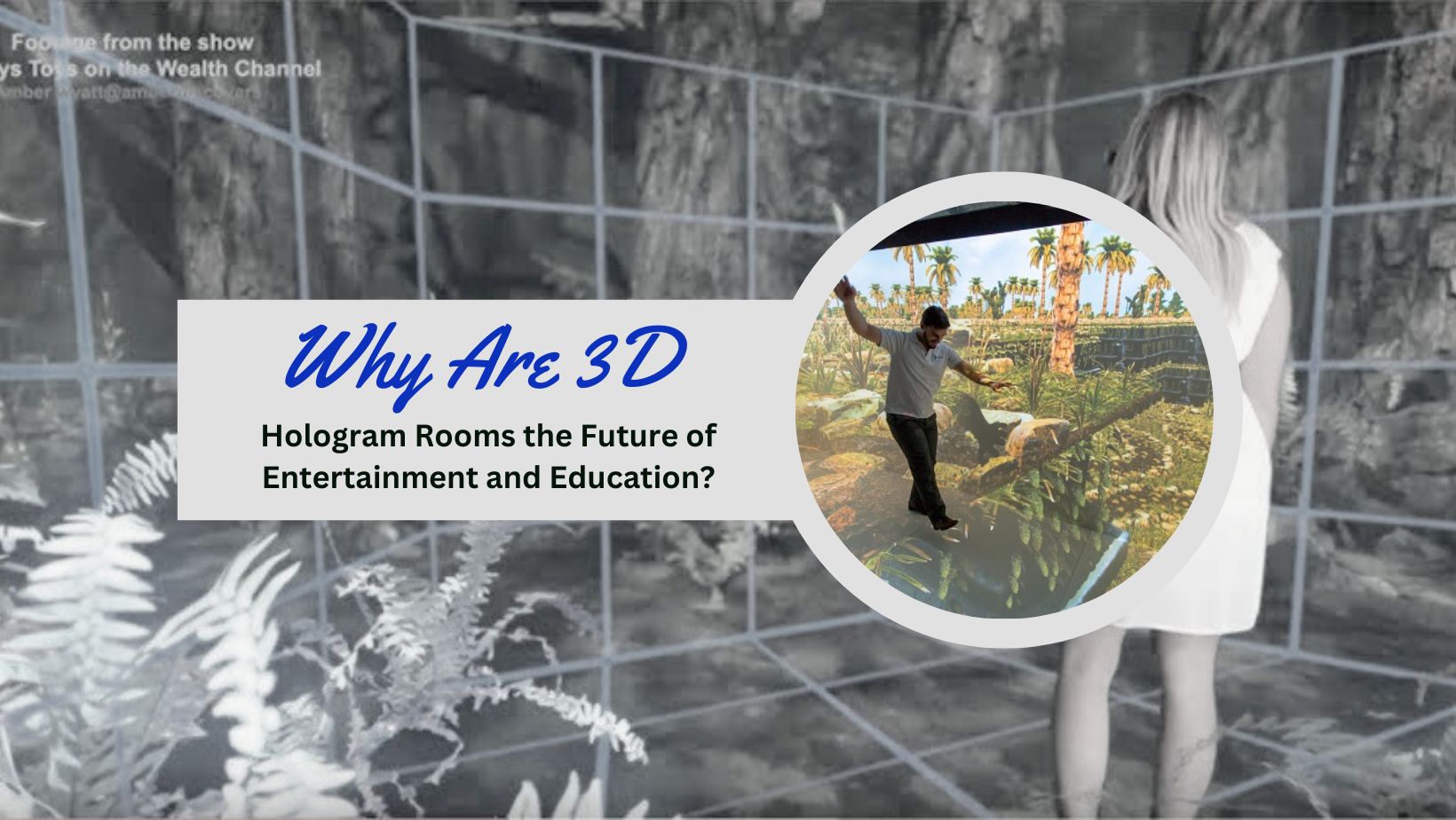In recent years, technological advancements have led to groundbreaking innovations in the field of entertainment and education. Among these innovations, 3D hologram room have emerged as a futuristic concept with the potential to revolutionize how we experience both entertainment and education. Compare and choose the most appropriate 3D holographic displays with one of the leading holographic display providers i.e., Vision3D. Combining immersive visuals with interactive elements, hologram rooms offer a glimpse into the future of entertainment and education, promising unparalleled engagement and learning opportunities. In this article, we delve into the reasons why 3D hologram rooms are poised to become the next big thing in these domains.
Factors Determining 3D Hologram Rooms the Future of Education and Entertainment
A few reasons are detailed below that are responsible for ensuring Room 3D Model as the future of entertainment and education.
Hologram Room in Unprecedented Immersion
One of the most compelling aspects of holographic suits is their ability to provide users with an unparalleled sense of immersion. Unlike traditional forms of entertainment and education, which rely primarily on flat screens or static images, hologram rooms create a three-dimensional environment that surrounds the viewer. This immersive experience allows users to feel as though they are truly part of the content, whether they’re exploring ancient civilizations in a history lesson or battling virtual enemies in a futuristic game.
Enhanced Interactivity
Another key advantage of hologram rooms is their ability to foster enhanced interactivity. Rather than passively consuming content, users can actively engage with holographic objects and environments, manipulating them in real-time through gestures or voice commands. This interactivity not only makes the experience more engaging but also facilitates deeper learning and understanding. For example, students studying anatomy can interact with virtual models of the human body, rotating them and zooming in on specific organs to gain a better understanding of their structure and function.
Multi-Sensory Engagement
Hologram Rooms offer a multi-sensory experience that appeals to more than just sight and sound. By incorporating haptic feedback technology, users can also engage their sense of touch, feeling the texture of virtual objects as if they were real. This sensory immersion creates a more holistic experience that stimulates the mind and enhances retention. In educational settings, this can be particularly beneficial, as students are more likely to remember information when it’s presented in a multi-sensory format.
Hologram Room in Breaking Boundaries
One of the most exciting aspects of hologram rooms is their potential to break down geographical and logistical barriers. With the advent of remote collaboration tools, users from around the world can come together in a virtual space, regardless of their physical location. This opens up a world of possibilities for both entertainment and education, allowing people to attend concerts, lectures, or workshops without ever leaving their homes. In addition, hologram rooms can be easily customized to accommodate different preferences and accessibility needs, ensuring that everyone can participate fully in the experience.
Limitless Creativity
Room 3D model provides creators with a blank canvas upon which to unleash their creativity. From designing immersive storytelling experiences to crafting interactive learning modules, the possibilities are truly endless. Filmmakers can create cinematic experiences that blur the line between reality and fiction, while educators can develop engaging simulations that bring complex concepts to life. With the right tools and imagination, hologram rooms have the potential to transform any subject matter into a captivating experience that resonates with audiences of all ages.
Real-World Applications
Beyond entertainment and education, hologram rooms hold promise for a wide range of real-world applications. In healthcare, for example, surgeons can use holographic simulations to practice complex procedures before performing them on actual patients, reducing the risk of errors and improving outcomes. Similarly, architects and engineers can use hologram rooms to visualize and refine designs, allowing them to identify potential issues before construction begins. From training simulations to virtual prototyping, hologram rooms offer practical solutions to real-world challenges across various industries.
Hologram Room in Challenges and Considerations
While the potential of hologram rooms is undoubtedly exciting, it’s essential to acknowledge the challenges and considerations that come with their implementation. Technical limitations, such as resolution and processing power, can impact the quality of the holographic suit experience and limit its scalability. In addition, concerns about privacy and data security must be addressed to ensure that users feel comfortable engaging with hologram technology. Furthermore, widespread adoption will require significant investment in infrastructure and resources, as well as ongoing research and development to push the boundaries of what’s possible.
Conclusion
As technology continues to evolve, hologram rooms are poised to become a ubiquitous part of our lives, offering new possibilities for entertainment, education, and beyond. With their ability to provide unprecedented immersion, enhanced interactivity, and multi-sensory engagement, hologram rooms have the potential to transform how we learn, create, and connect. While challenges remain, the future of hologram technology is bright, promising a world where imagination knows no bounds and reality is only a hologram away. To know more about holographic displays, connect with Vision3D customer care number – +91-8971953451.
